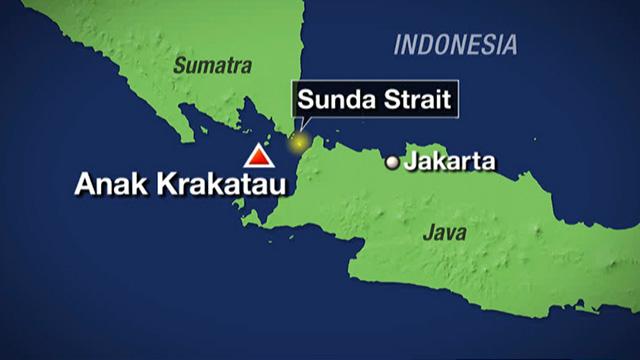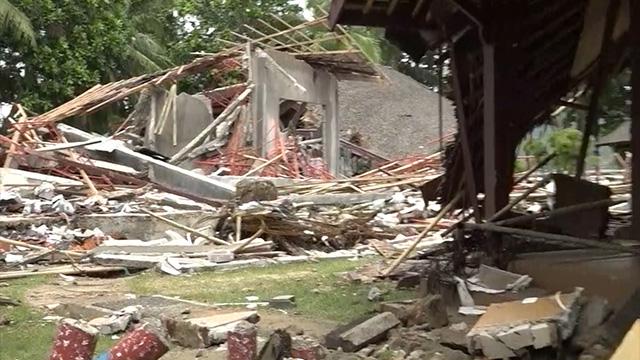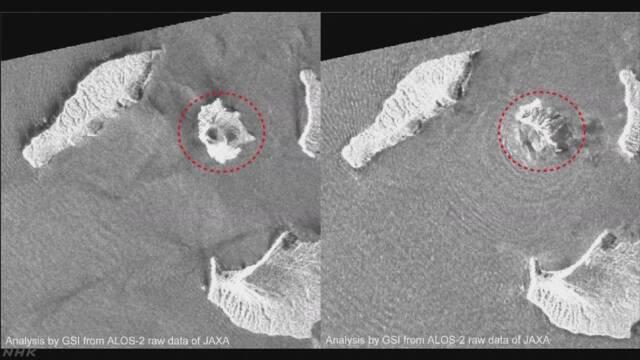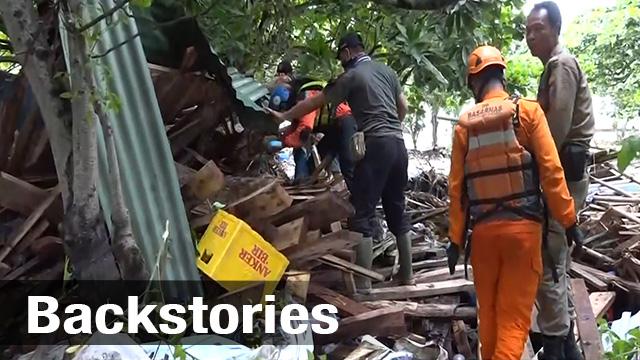Extensive damage

One eyewitness described the scene to NHK. He says small waves came first, followed by much larger ones. He describes how he called out for his children as he fled the rising water.
Indonesian TV aired a video showing a popular band giving a beach concert at a resort hotel. The floor suddenly gave way and the stage collapsed.
Many houses in the area have been badly damaged. Restaurants and other buildings by the beach were destroyed.
Local people have been collecting clothes and other belongings from the wreckage of their houses. One man says he believes people are still trapped under the debris, and he's been trying to locate them. But rescue operations have been hampered in some areas due to a lack of equipment.

What caused the tsunami?
Authorities say there were two waves. In the worst-hit areas, the first wave was two to three meters high and the second was four meters high.
No earthquakes were recorded before the tsunami. But a volcano on a nearby island in the Sunda Strait erupted about half an hour earlier.
Meteorological authorities in Indonesia say the eruption caused an underwater landslide, which in turn led to the giant waves. The tsunami reached the coast 24 minutes after the eruption.
Japanese findings
Researchers at Japan's Geospatial Information Authority say, according to their analysis of satellite images, it is possible that the tsunami was triggered by a section of the volcano collapsing into the ocean.
They studied topological changes to Krakatau Island by comparing images taken last August with those captured on Monday.
The study revealed significant changes to the island's southwest, such as blurred coastlines and the disappearance of a crater, which are all indicative of a collapse.

Professor Emeritus Toshitsugu Fujii of the University of Tokyo says this suggests the tsunami was caused by a debris avalanche into the ocean as a result of a volcanic sector collapse. He says the volcano was formed over a relatively short span of 100 years and may be brittle as a result.
Japan at risk of similar disaster
Something similar happened in Southwestern Japan in 1792. Mount Fugen in Nagasaki Prefecture erupted and triggered an earthquake.
A landslide from a nearby mountain poured into the Ariake Sea and set off a huge tsunami. It swept across the Shimabara Peninsula and reached Kumamoto Prefecture on the opposite side of the gulf. Around 15,000 people were killed.
In 1741, volcanic activity on Oshima-Oshima, a small island off Japan's northern prefecture of Hokkaido, caused a mountain to collapse, triggering huge tsunami waves. More than 1,400 people were killed in Hokkaido and in the northeastern region of Japan's main island.
Fujii says many of Japan's volcanoes are on the coast. He says there is a high possibility that volcanic activity could trigger a tsunami. He says people living near volcanoes need to be aware of the risk.
Danger remains

Seismologists in Indonesia say the volcano responsible for the tsunami has been active since June this year. There has been an eruption almost every day since September.
As the volcano continues to rumble, authorities are warning there could be more tsunamis to come and are urging people to stay away from coastal areas.
